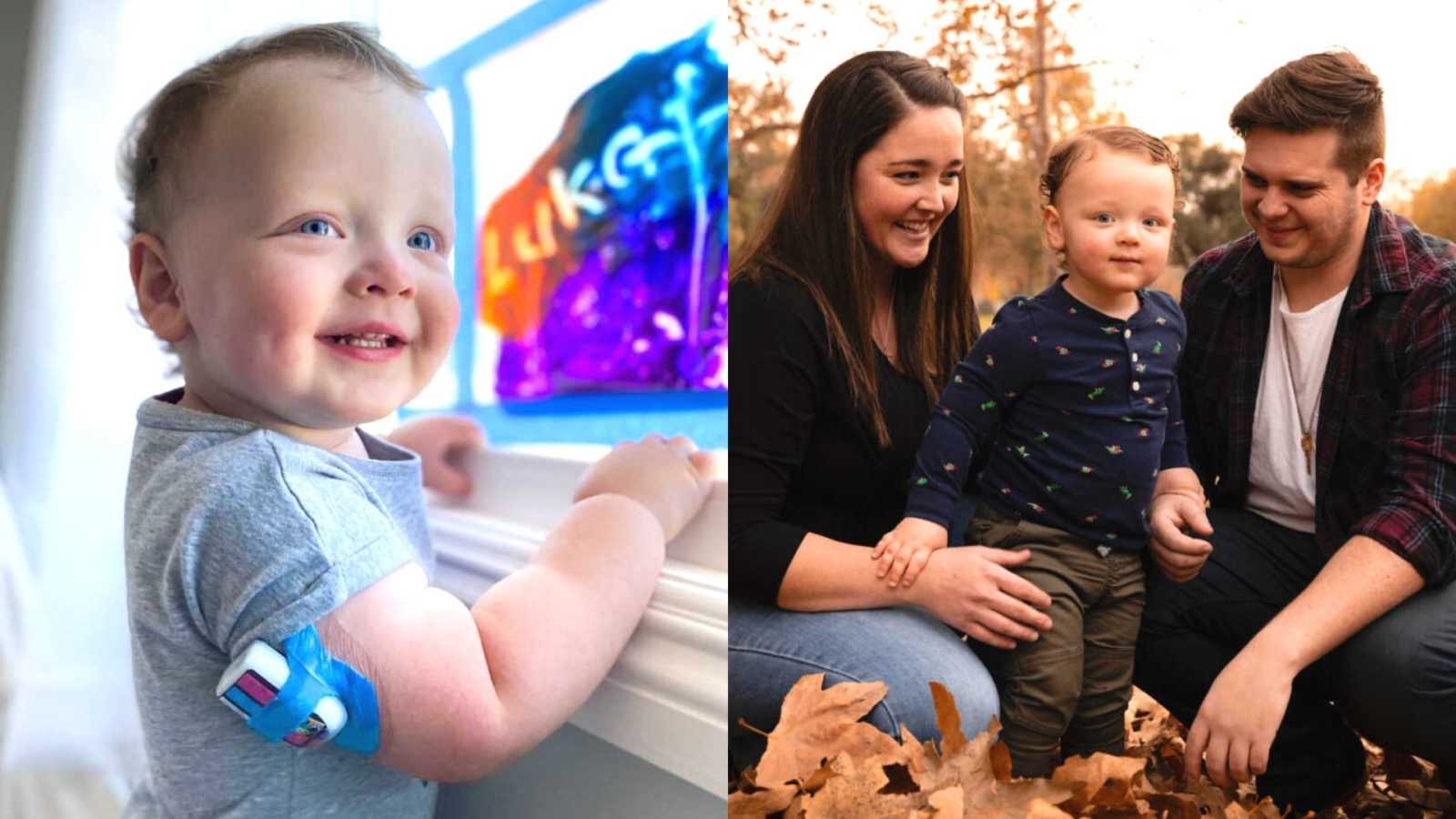“Lukas was born September 24, 2018. Although premature, he was a healthy little boy, 5 pounds, 15 ounces of pure joy. His dad, James, and I met 12 years ago in high school and have been together ever since. We had been married for 4 years and decided it was time to start a family.
Lukas was our rainbow baby after a loss the year before and he was everything we needed. He was the happiest boy and always dancing and laughing. Around a year old, he started to get irritable and grumpy sometimes, but we just assumed it was a baby/toddler thing and we let it go.
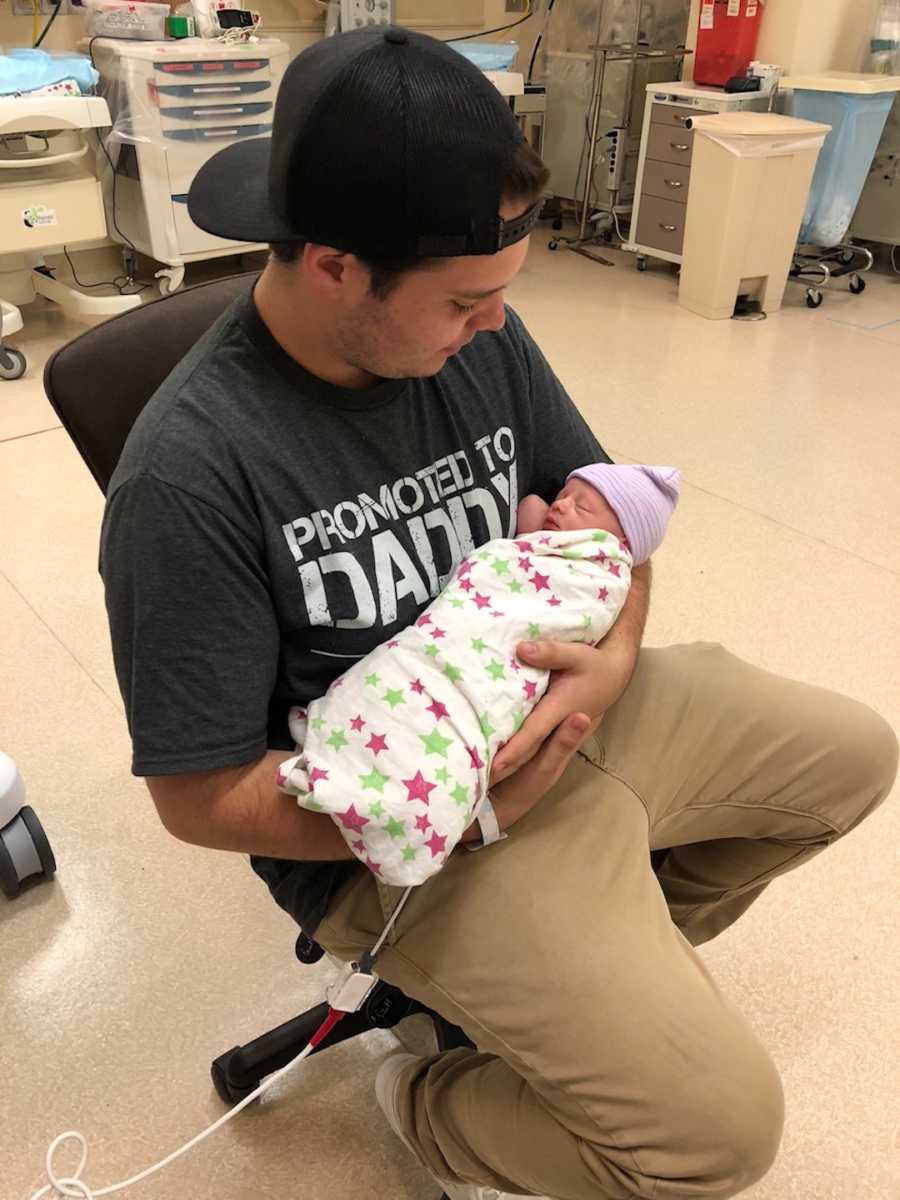
Lukas was a year old. It was summer here in California, and he had been nursing nonstop and drinking large amounts of water. I can clearly remember us always saying how much that boy sure loved his water. Within a couple of weeks, Lukas peed through his diaper at night a few times. I even posted in one of the mom groups I was in on Facebook asking for advice. All the moms said, ‘It is totally normal. I’d suggest these inserts that go into the diapers to help absorption to avoid that happening.’ He slept through the night since he was a baby so he would wake in the morning soaked from his arms to his toes.
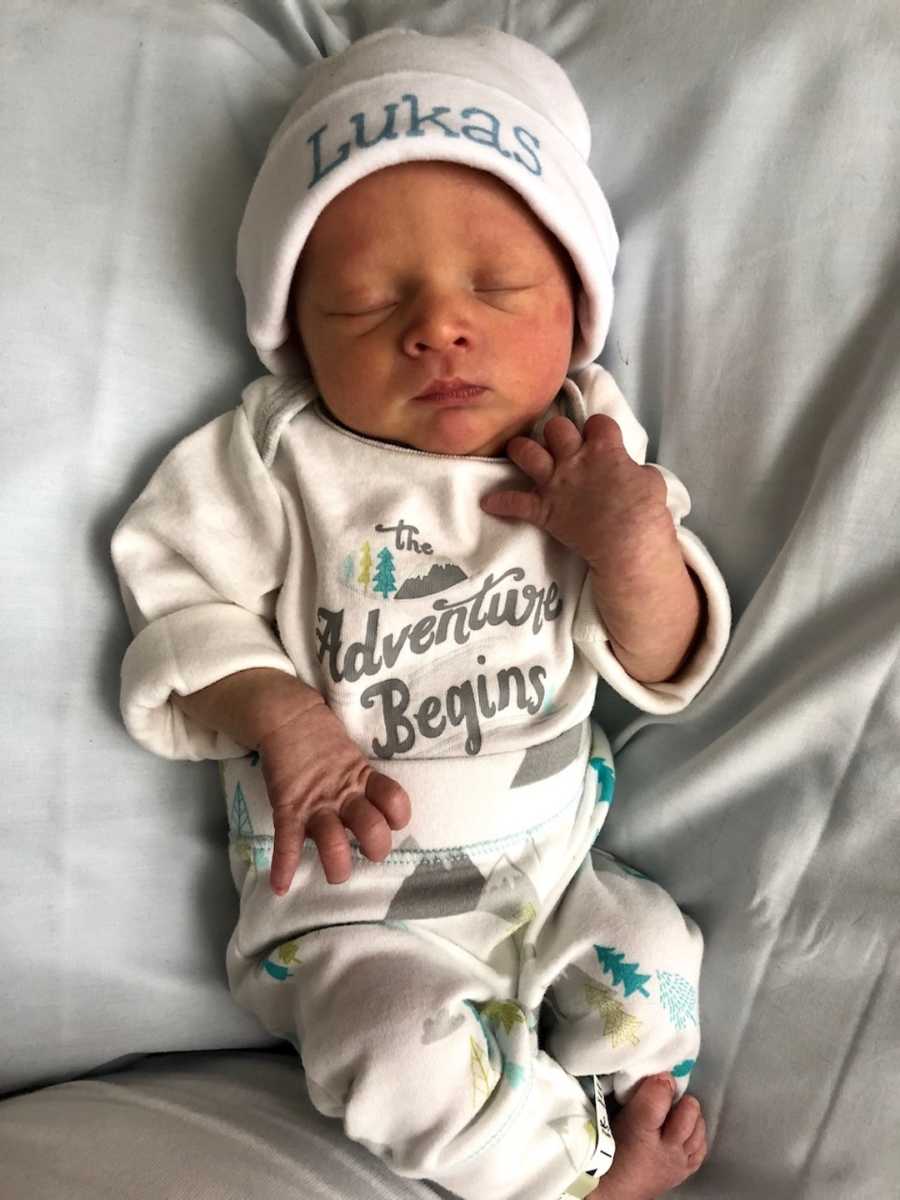
I was an overnight nanny for a family of four kiddos. I had been with that family for 2 years and continued to watch them after Lukas was born. I was watching the kids overnight and the next morning, Lukas woke up soaked for the third time that week. I changed his clothes, got the kids ready, and dropped them off at school. Once we got home, I put him in the bath. I have photos and a video from that morning. He was smiling and squealing and acting happy as he always was. Looking back at those photos now, we can tell he was sick. In fact, looking back 4 or 5 weeks, you can see it in his eyes.
After bath time, I got him dressed and took him to the playroom so I could get his breakfast made. James went to the playroom to say goodbye and head off to work. I heard him say, ‘Did Lukas have a frozen teether this morning?’ He hadn’t. James said, ‘His hands are freezing cold.’ It was 75 degrees outside, the air conditioning wasn’t on, and he had just had a warm bath. It just wouldn’t make sense for his hands to be cold. James picked him up and said his feet were cold too.
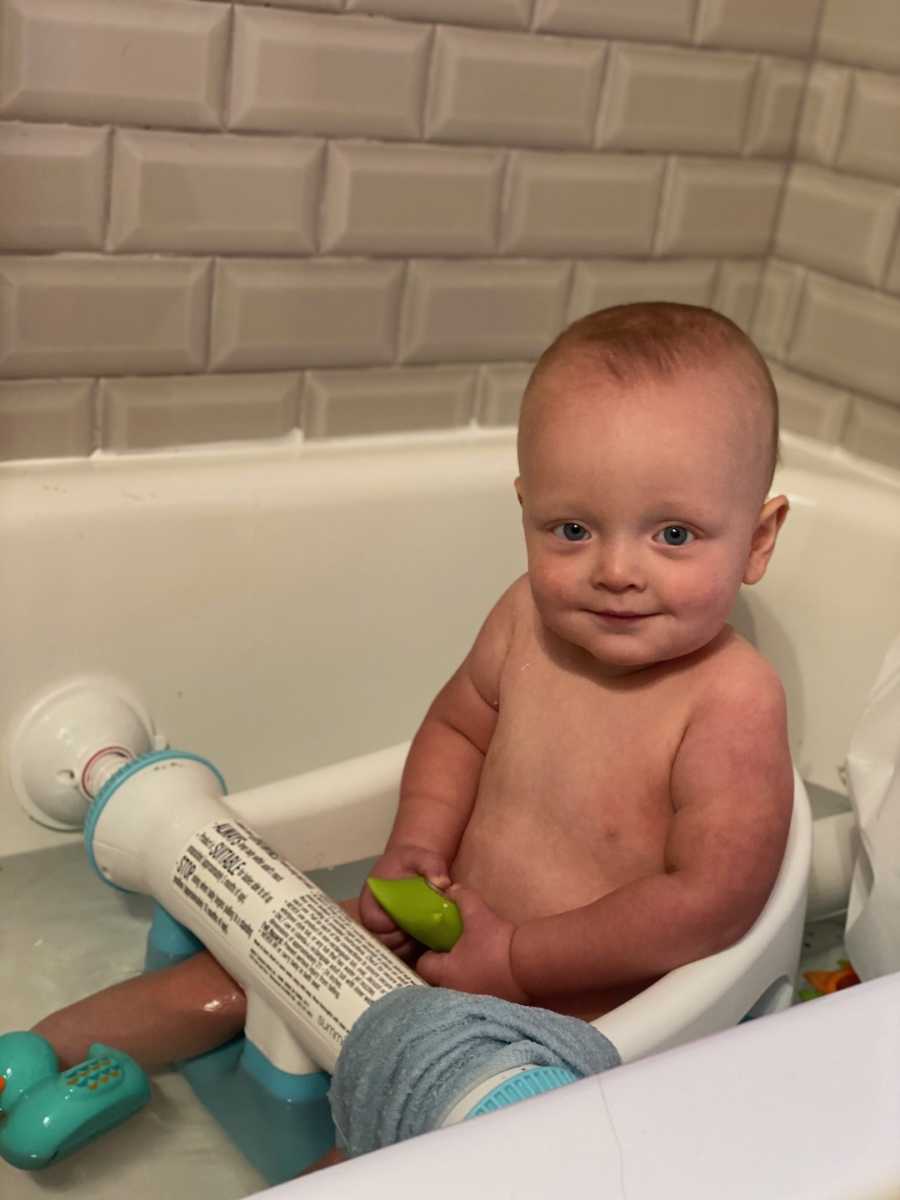
I headed to the playroom and as I was walking towards them, James took Lukas’s pacifier from his mouth, and from across the room, I could see his lips were blue and we both immediately knew something wasn’t right. I called his pediatrician while I packed up the diaper bag and she said, ‘As long as he is not in distress, go straight to the children’s hospital,’ which was about 45 minutes away. His breathing seemed a little heavy, but he seemed alright, so we headed to the children’s hospital.
On our drive, I sat in the back with Lukas and he fell asleep. James and I went back and forth trying to think of what could be wrong. Of course, it was just the start of flu season and I was nannying four school-age kids, so we immediately went to the flu, RSV, or maybe he swallowed something. Those were the only things we could think of that made sense.

When we arrived at the ER, the waiting room was full. We walked to the desk to check-in and they took us straight back. Our doctor had called, and they were expecting us. That should have been our first sign something wasn’t right. It was probably about 11:30 a.m. by the time we got there. As soon as we went back, they weighed him and took us back to a bed. We would find out later he had lost 4 pounds in the last month. They got his vitals and then started running tests. EKG, everything was fine. Ultrasound, everything was fine. X-rays, everything was fine. In between all of this, the nurses were trying to get an IV into his arm. They could hardly see his veins at all.
They bought in a special light to shine through his arm to better see his veins and they were still barely visible. Seven different people came in to try to get an IV in our little boy. Each person blew a vein and would call the next person. We saw the head of trauma, the NICU nurses, everyone. They dubbed him, ‘the veinless wonder.’ All the while, we are thinking, ‘Why the hell do they keep poking him if all of these tests are coming back that he is fine?’ We hadn’t even realized Lukas was slowly fading. We just thought he was tired from being pinned down for 2 hours.
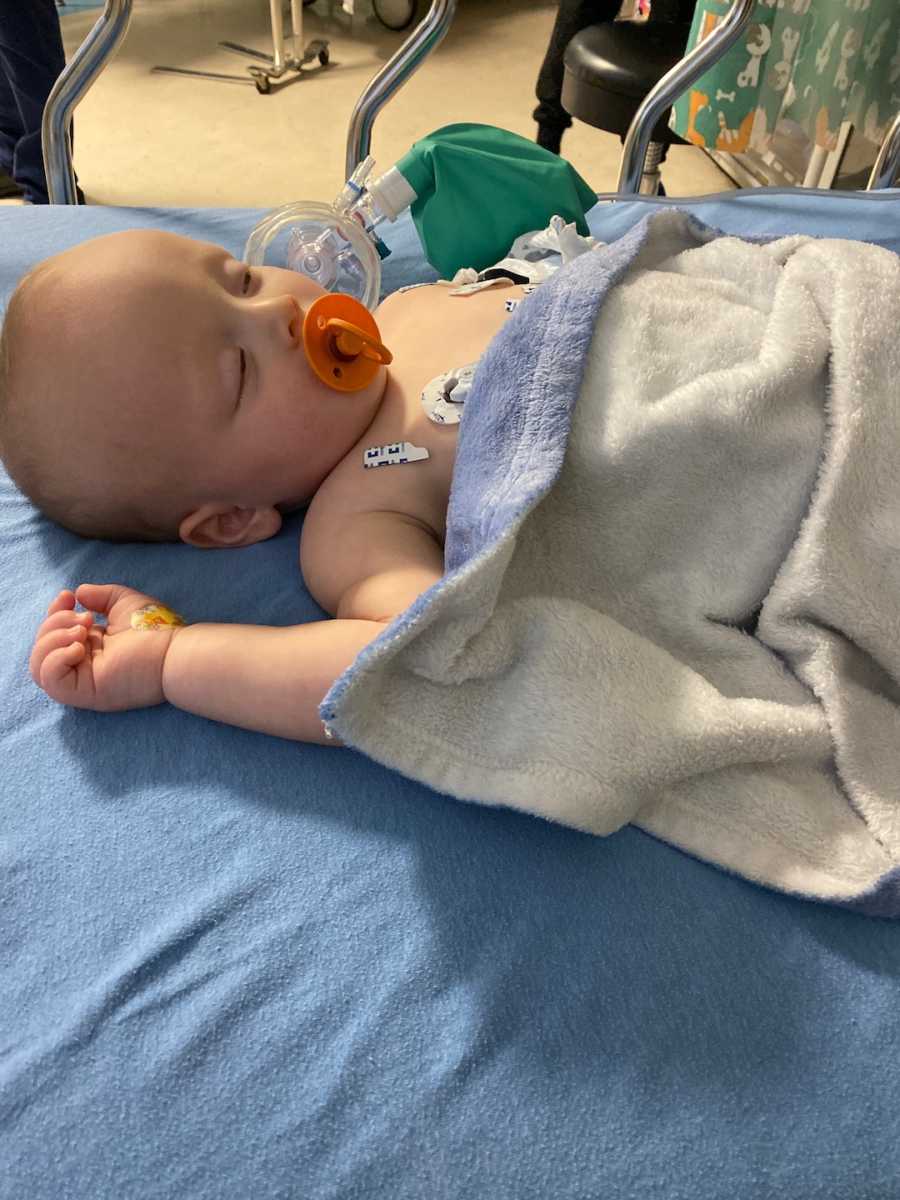
A nurse finally looked us in the eyes and said, ‘Your baby LOOKS sick,’ after she could tell we didn’t understand why this was still happening if all the tests were negative. We didn’t see it until that moment. We had texted our parents earlier to say we were taking him to the ER, but we didn’t think it would be a day that would change our lives forever.
One incredible nurse was able to finally get an IV in his arm. Then they didn’t want to risk messing that up, so they did a blood draw from his other arm. He was basically just asleep by this time, and we had no clue his body was shutting down in front of our eyes and he wasn’t sleeping but growing closer and closer to being in a coma. Not long after the blood draw, the doctor came in for the first time. She sat down and after asking if we had any family history of any diseases, she said, ‘Your son has type 1 diabetes and his body is in Diabetic KetoAcidosis or DKA.’
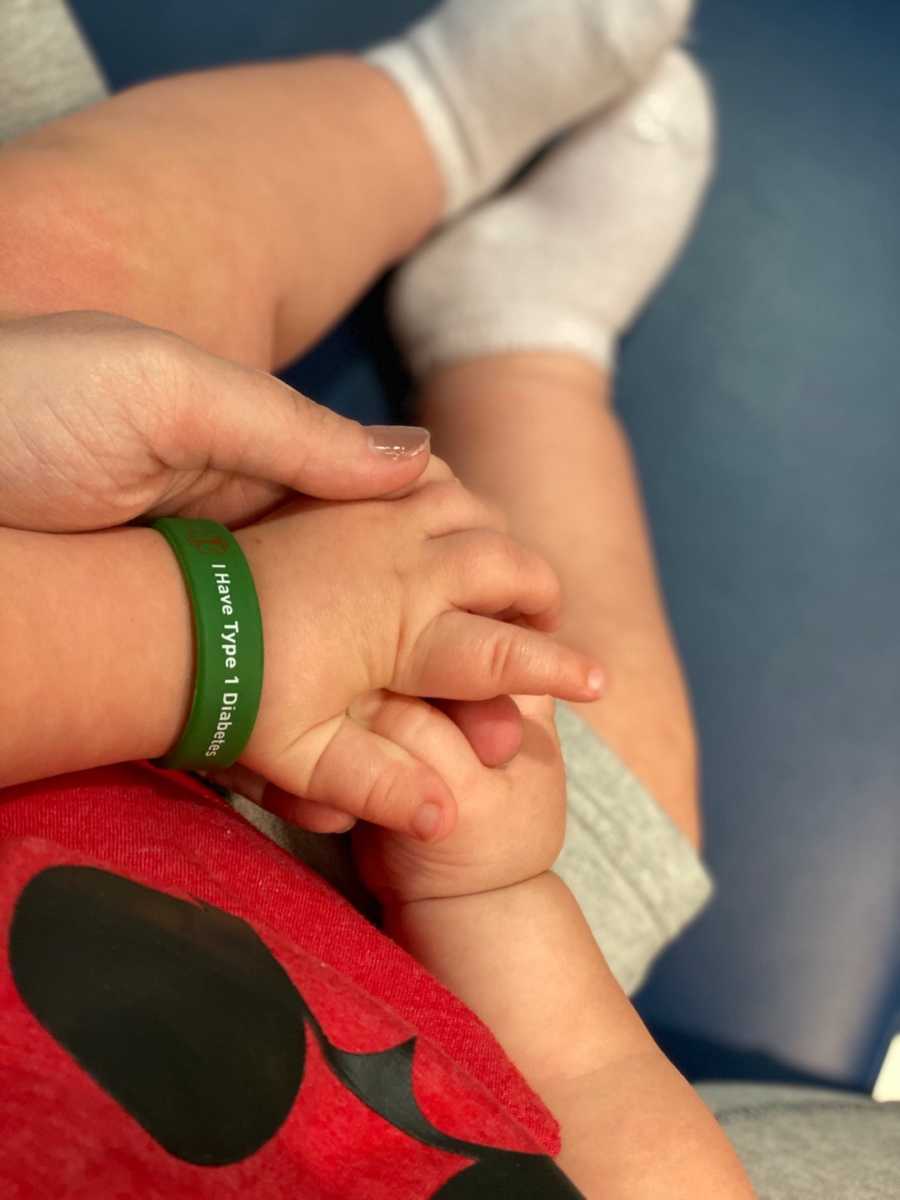
James and I looked at each other like, how in the world could our one-year-old have diabetes? We didn’t know the difference between type one and type two. The doctor explained, ‘Type one is an autoimmune disease and has nothing to do with his nutrition or overall health, but rather his body has mistaken his pancreas’ beta cells for a virus and his body is attacking itself.’ There is no way to stop it and no way to regenerate those cells. Weight loss, insane thirst, and frequent urination are the main symptoms of diabetes, all of which Lukas had, all of which we had chalked up to other things.
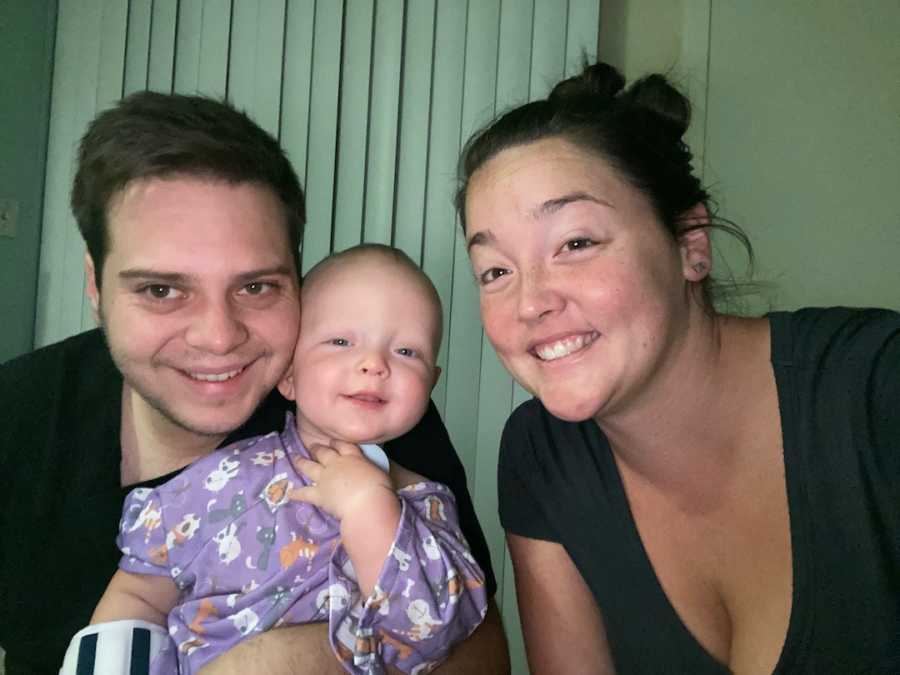
The next 5 days were a whirlwind of us learning about carb counting, insulin dosing, blood sugar checks, and ultimately learning we would be doing this with Lukas for the rest of his life, as there is no cure for type one diabetes. For every carb eaten, your body needs insulin in order to access that carb for energy and since his body isn’t making insulin, we have to inject it. There are also 50+ other things that affect blood sugar, so it’s not just as simple as injecting when he eats.
While in the hospital, James’ parents, my stepmom, and my sister had come to see him. Our parents both took the time to practice injections on oranges as we were being taught. I don’t think I will ever eat an orange again.
One trip to the ER and we learned we would be poking our baby with multiple needles a day for the rest of his life. After 5 days, we were sent home to mourn the loss of our son’s innocent childhood, the freedoms he once had, and the ease of all things in life.
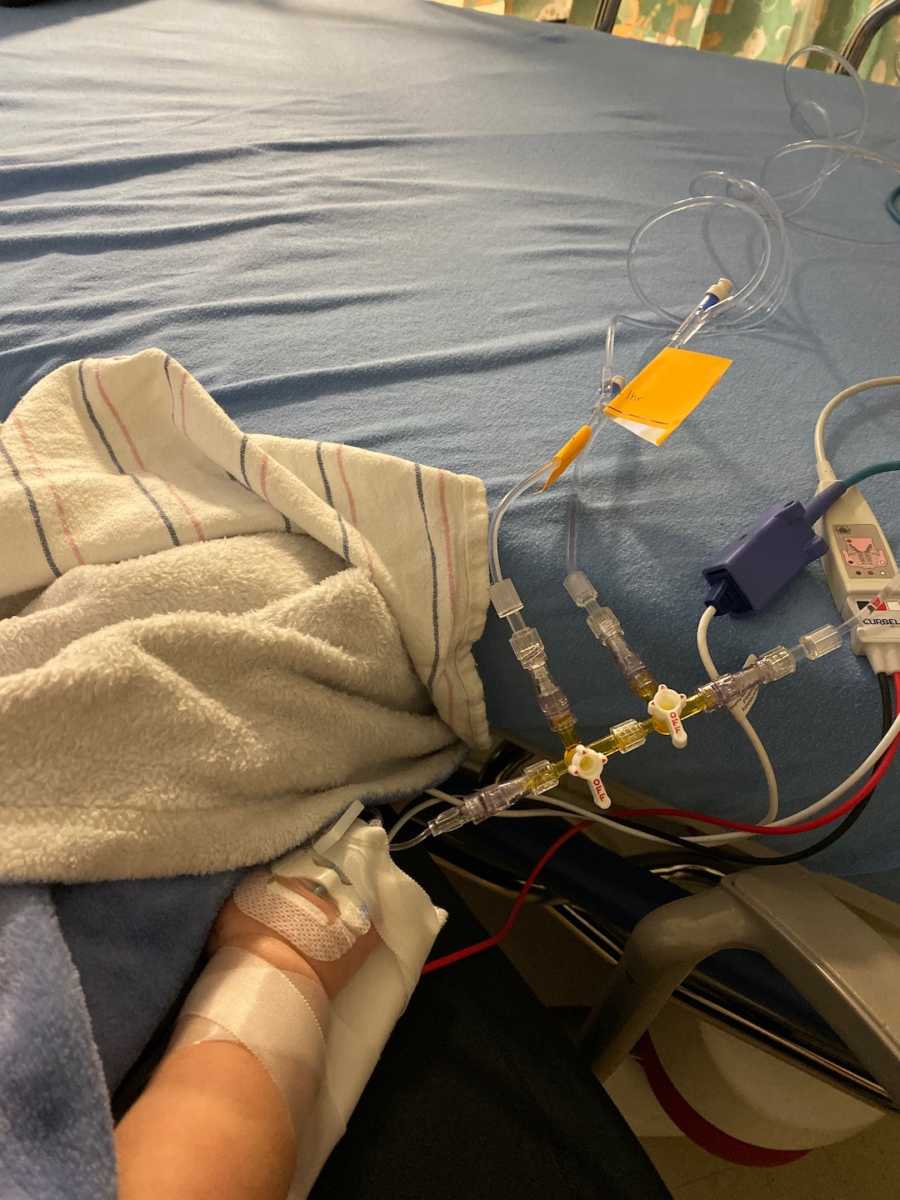
His life was now in our hands every second of the day. The decisions we were making about how much insulin to inject, and how long to wait before checking his blood sugar again were all life or death. You eat, sleep, and breathe diabetes. Every single thing you do is based on diabetes. Want to go play at the park? Wait, do we have insulin, his glucose meter, test strips, fast-acting sugar, and his emergency pen in case his sugar goes so low he faints or has a seizure. All things that were once a one-step process were now 10 steps. No one who hasn’t been in this seat can truly understand the seriousness of type one.
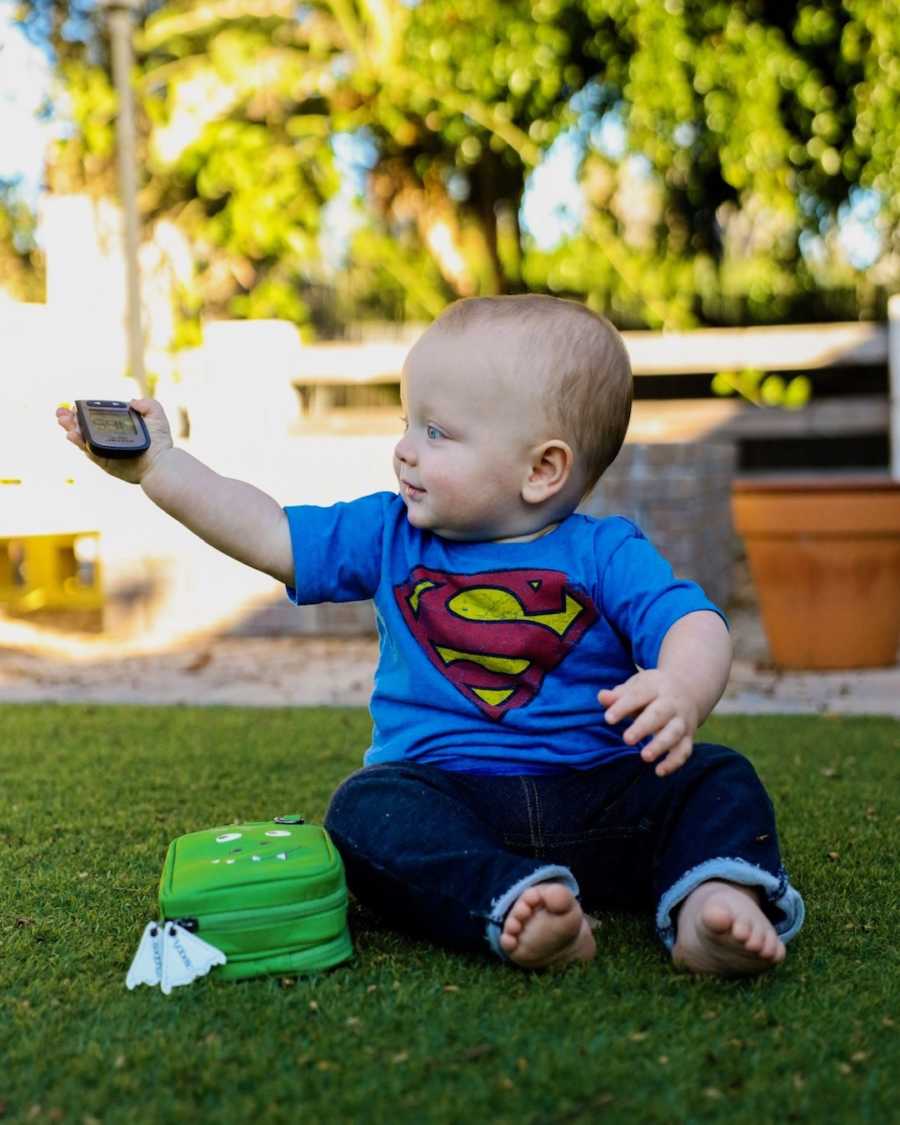
Our life was made a little easier when we got our first CGM (continuous glucose monitor). He wears it for 10 days at a time and sends his blood sugar to our phone every 5 minutes. Anything to poke our baby less. As time went on, things didn’t feel so foreign anymore. James and I were a solid team and we slowly gained confidence in what we were doing. From what we understand from other type ones, high blood sugar feels like a hangover, and low blood sugar feels faint and shaky. We don’t want either of those things for Lukas, so it is in our hands to do our best to avoid both of these things and keep his levels as steady as we can.
5 months into our diagnosis, Coronavirus hit and the small support system we had was shut down. Lukas is considered high risk, so seeing people was not an option for us in order to keep him safe and healthy. A few weeks earlier, he was hospitalized with stomach flu. We couldn’t keep his blood sugars up because he wouldn’t eat anything. We know being sick with anything can be much scarier for a diabetic, so we have been taking every precaution possible.

The saying ‘it takes a village’ is the most real thing I have ever heard and applies even more so when you have a child with a disability. If no one else knows how to care for their disability, there is never a break. At the start of the pandemic our village basically no longer existed because it couldn’t. I am grateful James and I are such a strong team because making it through all these months with no help and no breaks has been challenging.
Being a type one parent can be incredibly isolating because no one understands how difficult it is. My phone rings every time his blood sugar is low, and I have to feed him when it is. If I get nine phone calls in a night, that means no sleep, and the next day we just do the same thing. I am grateful to have found a few type one moms who I know I can text any time of day, even if just to vent.
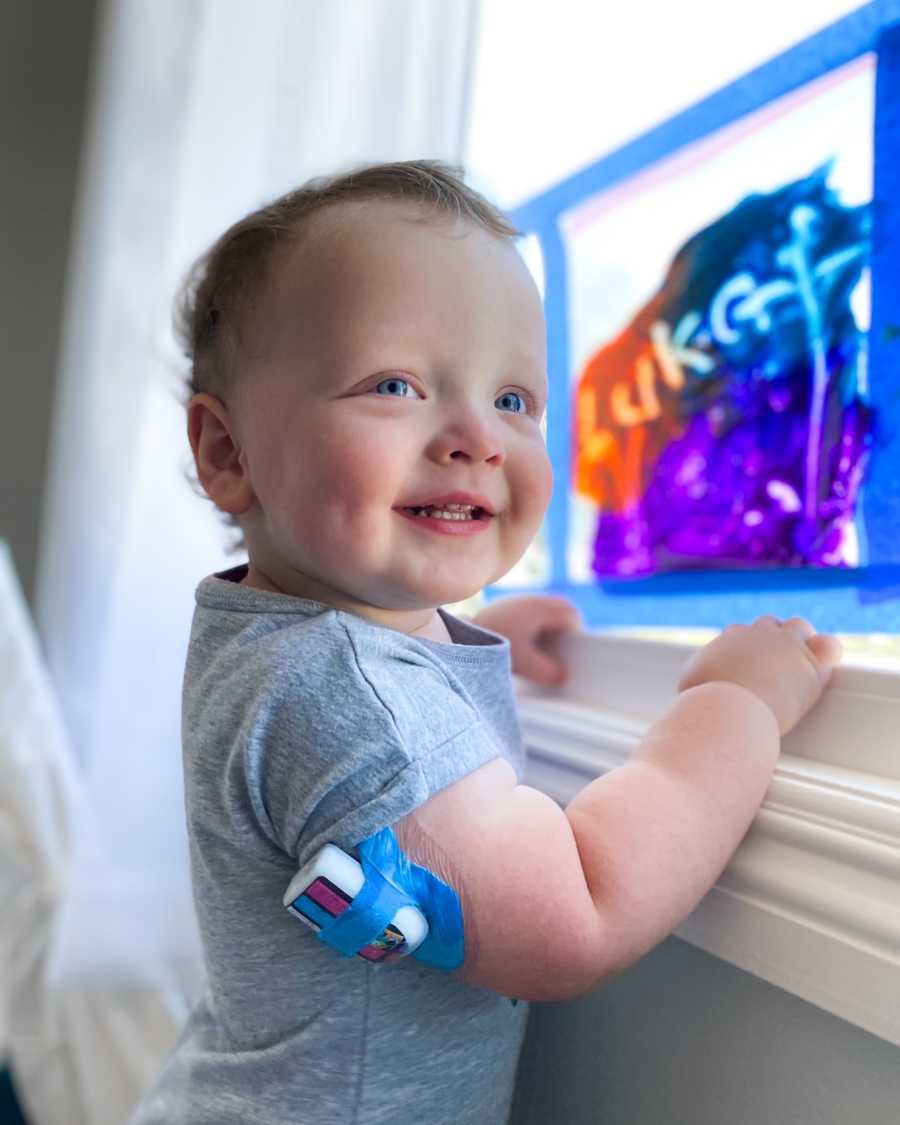
Every day has its challenges and we are learning more and more all the time about how to better manage his diabetes. His A1C, a measurement of blood that gives an average of what your blood sugar has been for the last 3 months, was 9.1% when he was diagnosed. A non-diabetics A1C is under 5.7%. We have worked hard the last 14 months and his A1C is now 6.0% and continuing to lower. In the midst of navigating this diagnosis, we are also facing a suspected autism diagnosis and awaiting formal evaluation for that. No matter what the outcome, we love Lukas as Lukas. He is perfect the way he is, and we just want to be capable of meeting him where he is in his development and helping him learn how he needs to.

We have spent the last year growing Lukas’ Instagram and trying to reach as many people as we can. He has almost 5,000 followers. I post his normal toddler antics as well as a ton about diabetes. I feel so thankful to have this platform. Not only have we connected with such an amazing community of other diabetics, but we also get to connect and help lots of newly diagnosed parents navigate the rough waters of this diagnosis.
For anyone facing a life-changing diagnosis, my biggest piece of advice is when things are tough, it is just a bad day, not a bad life. Diabetes doesn’t define Lukas, and neither will autism if that is the diagnosis that is reached. He can be diabetic, be proud of his diabetes, be an advocate, and still just be Lukas. We want to raise him to be loving and nonjudgmental and accepting of others’ differences.
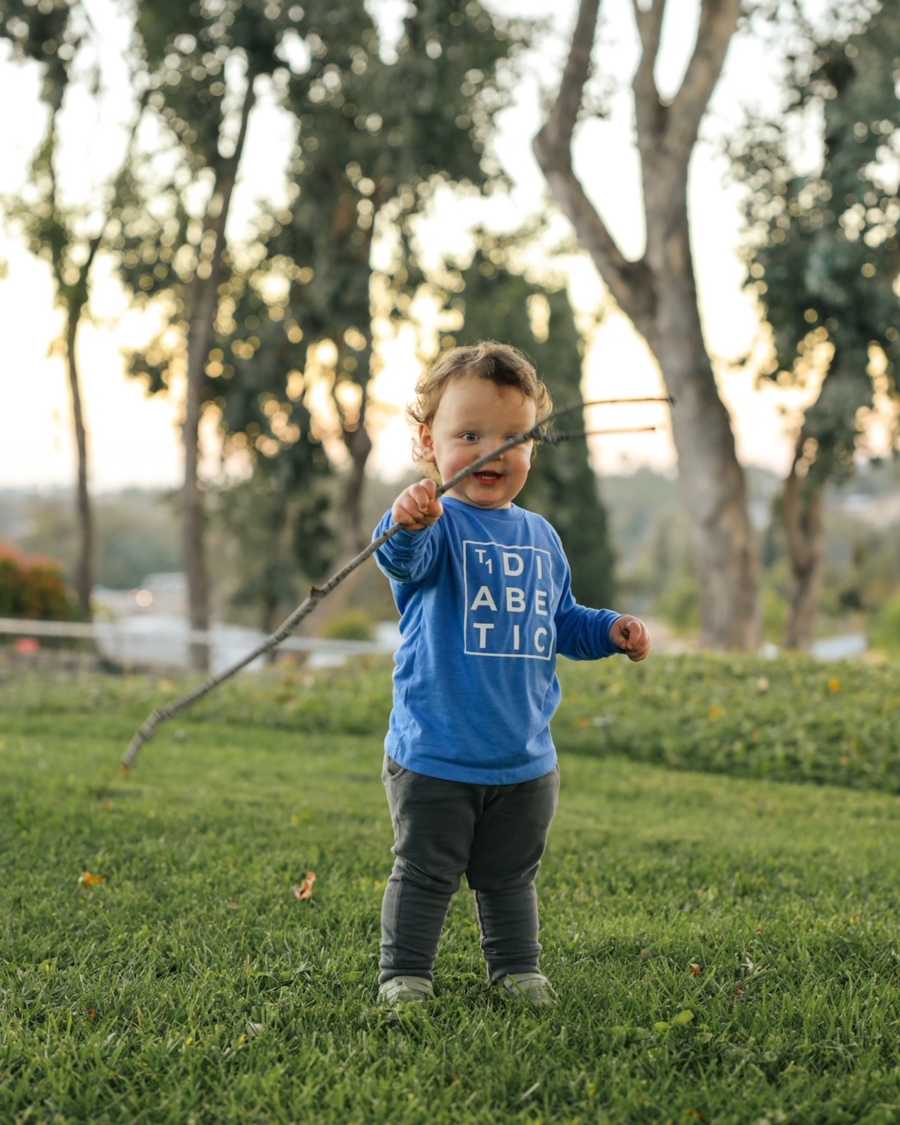
I work hard to make sure the things he watches and the things we read are all about inclusivity and diversity. He deserves to grow up knowing he is accepted and loved exactly as he is. A big part of that is how parents teach their kids to react to and treat differences. I’d love for you to take the time (if you have kids or plan to one day) to teach your kids about differences. We are all different but the same. One day, I hope there is a cure, but until then, we fight every day to keep Lukas alive, healthy, and happy and to educate as many people as we can about type one diabetes.”
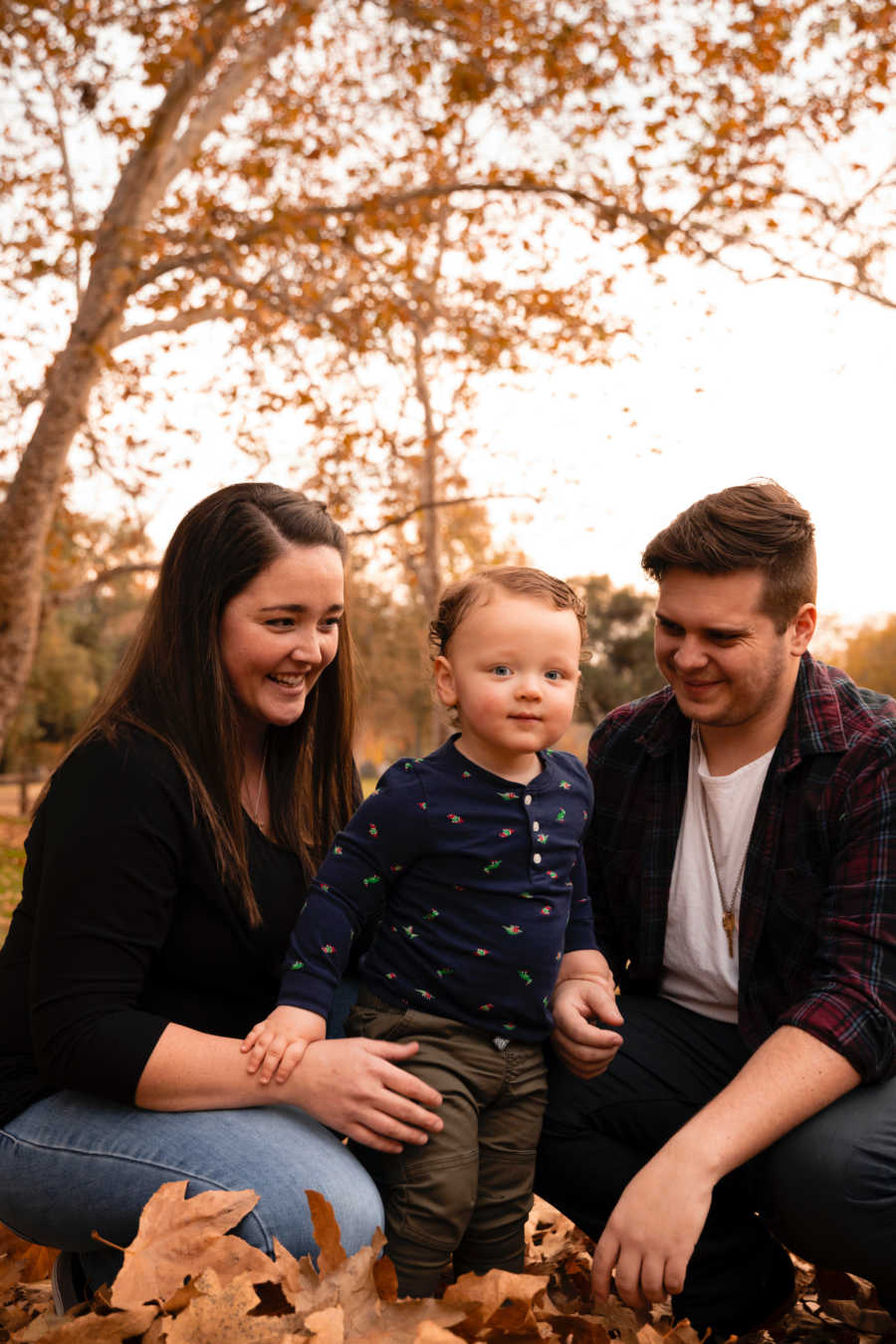
This story was submitted to Love What Matters by Amanda Kellogg from San Marcos, CA. You can follow her story on Instagram. Submit your own story here, and be sure to subscribe to our free email newsletter for our best stories and YouTube for our best videos.
Read more stories like this:
Do you know someone who could benefit from reading this? SHARE this story on Facebook with family and friends.

